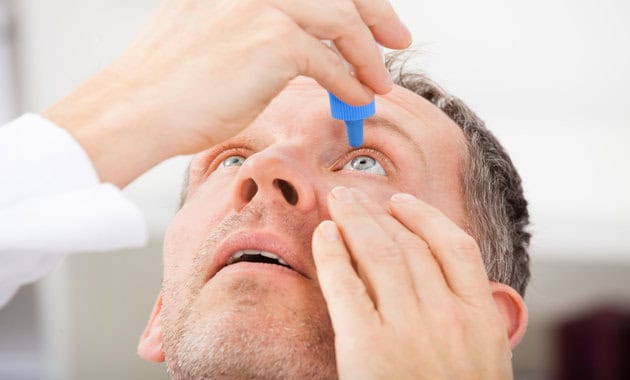
The month of June is observed as Cataract Awareness Month.
According to a 2017 study published in the Journal Lancet, an estimated 95 million people worldwide are affected by cataract[1]. Three surveys conducted in India have projected that the number of people suffering from cataract will reach 8.25 million by 2020[2]. So knowing about the condition and the common myths surrounding cataracts can play a key role in the treatment of this leading cause of preventable blindness.
Common Myths About Cataract
There are many misconceptions about cataract including its treatment and prevention. In this article, we dispel some of the common myths on cataracts such as:
Myth 1: Cataracts are an age-old problem
Fact: Although cataracts usually occur at an old age, it can occur at any age. It can be congenital, occur at birth, or can occur due to genetic predisposition. It can also be caused because of smoking, eye injury and certain conditions such as nutritional deficiencies, diabetes, stress, hypertension, and glaucoma[4].
Myth 2: Cataracts can be prevented by diet, yoga, and exercise
Fact: It is one of the common misconceptions that most people believe. However, it is not true. Cataracts cannot be prevented by medicines, diet, yoga, or exercise. There is no prevention for cataract. However, going for regular eye exams, quitting smoking, eating foods rich in antioxidants, maintain a healthy weight, and protecting the eyes from UVB rays by wearing sunglasses can help to lower the risk of developing cataract and slow down its progression.
Myth 3: Eye drops can prevent/dissolve cataract
Fact: There are no eye drops that can prevent, cure or dissolve cataract as claimed by many products in the market. In fact, the Food and Drug Administration has not approved of any eye drops which can cure, prevent, delay or dissolve cataracts. It is important to know that cataract occurs as a natural process of aging or due to other reasons mentioned before, which should be diagnosed and treated for healthy vision.
Do You Really Care For Your Eyes? Allow Your Eyes To Easily Get What They Need. Click Here
Myth 4: Cataracts are reversible
Fact: No. Cataracts cannot be reversed. This is because, the lens becomes cloudy naturally with age or disease and hence, the process is unavoidable. However, you can slow down the progress at which the lens is affected by following simple measures. These include eating a balanced diet, saying no to smoking and using sunglasses to protect the eyes against the harmful UV radiations.
Myth 5: Cataracts can grow back
Fact: As we all know, cataracts develop as the cells of the lens die and accumulate leading to the formation of a cloudy substance which blocks the vision. So when a person undergoes a cataract surgery the cloudy lens is replaced with a new artificial lens. The new lens is implanted/fitted into the lens capsule. This is the reason why cataracts cannot grow back.
Myth 6: Cataract surgery is painful and dangerous
Fact: It is one of the most common belief why people with cataract avoid getting the surgery done. According to the American Academy of Ophthalmology, cataract surgery is one of the safest surgical procedures with a 95 percent success rate[5]. Talk to your doctor about the pros and cons of the surgery to get a clear idea about your recovery rather than falsely believing claims.
**Consult India’s best doctors here**
Myth 7: It takes months to recover from cataract surgery
Fact: Most people do notice an improvement in vision immediately after the surgery. However, in some people, there might be a gradual improvement over a few weeks after surgery. As soon as the eye patch is removed, which is done on the next day post-surgery, patients can resume their normal activities.
Cataracts cannot be prevented but it can be treated. As the risk increases with age, it is important to schedule an appointment to an ophthalmologist every year as you age to know any changes, if any in the early stages, and keep your eyes healthy.
(The article is reviewed by Dr. Lalit Kanodia, General Physician)
Recommended Reads:
Types Of Eye Specialists: Ophthalmologist, Optician and Optometrist
8 Effective Tips To Improve EyeSight
References:
1. Liu YC, Wilkins M, Kim T, Malyugin B, Mehta JS. Cataracts. Lancet. 2017 Aug 5;390(10094):600-612.
2. Murthy G, Gupta SK, John N, Vashist P. Current status of cataract blindness and Vision 2020: the right to sight initiative in India. Indian J Ophthalmol. 2008 Nov-Dec;56(6):489-94.
3. Gupta VB, Rajagopala M, Ravishankar B. Etiopathogenesis of cataract: an appraisal. Indian J Ophthalmol. 2014 Feb;62(2):103-10.
4. Informed Health Online. Cologne, Germany: Institute for Quality and Efficiency in Health Care (IQWiG); 2006. Cataracts: Overview. 2013 May 22.
5. Cataract Facts and Myths. American Academy of Ophthalmology.